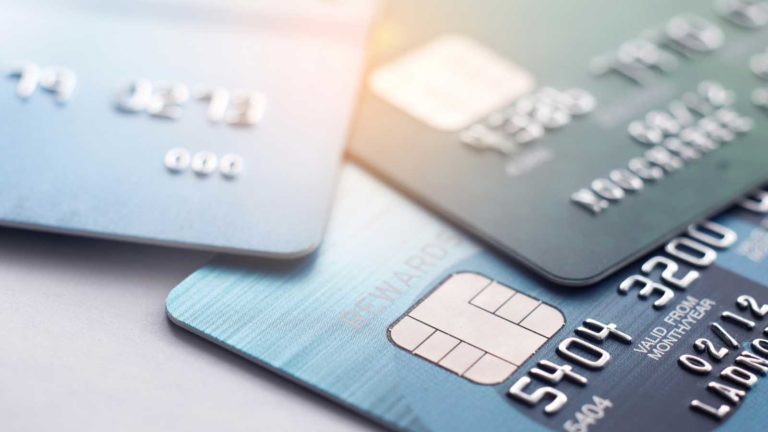Editorial Note: InvestorPlace Beacon independently determines what we cover and recommend. We earn a commission from affiliate partners on many offers and links. However, these commissions do not affect our editors' opinions or evaluations. Click here to read our full advertiser disclosure.

Source: Teerasak Ladnongkhun/Shutterstock.com
Who doesn’t love a good rewards credit card? If you’ve got things to buy anyway, you may as well earn cash, flights, hotels, or gift cards while doing it. The points sound good: You’ll get 1%, 3%, 5% back. “Your chance of approval is excellent” — or “You’re pre-approved.” Good to go.
Let’s not forget, though, that these letters you get in the mail, or ads you see online, are just that: advertising.
There are a few considerations that the ad is going to minimize… or fail to mention at all.
Points versus Interest
The first and best way to decide if a credit card is right for you has nothing to do with points, rewards, welcome bonuses, or any kind of member perks.
It’s the interest you’ll pay, usually expressed as an annual percentage rate (APR).
So, ask yourself: “How likely is it that I’ll pay off this credit card every month?”
If you do, it’s great to earn 1% or even 5% on those purchases. But if not, the interest payments could eat away at those rewards, and then some.
- These days, 24% is a typical APR that Americans will pay on their new credit card.
- Your first month of holding a balance, you’ll be charged 2% interest.
- After month two, you’ll have been charged 4% interest.
- After month three, you’ll have been charged 6% interest… all the way up to 24% over the course of a year.
While many rewards cards are no worse than any other credit card in terms of their APR, some reward cards do have a higher APR, especially airline and hotel reward cards.
If you’re likely to hold a balance from month to month, then try to assess these credit cards not necessarily on earning the most rewards, but on getting the lowest APR.
Just a few percentage points of APR make a big difference in how much interest you could ultimately pay. Not to mention how long it could take to pay off that balance.
Here’s how much card issuers would end up charging you on the exact same balance but at different APRs:
| APR | Balance | Minimum Monthly Payment | How Long to Pay It Off? | Total Interest if Paying the Minimum | Fixed Monthly Payment | How Long to Pay It Off? | Total Interest With $100 Payments |
| 19% | $3,000 | $77.50 | 18 years | $4,156 | $100 | 3 ½ years | $1,102 |
| 21% | $3,000 | $82.50 | 19 years | $4,624 | $100 | 3 ½ years | $1,291 |
| 24% | $3,000 | $90.00 | 19 ½ years | $5,332 | $100 | 4 years | $1,627 |
You can see why rewards card customers who do pay off the balance each month (thus avoiding interest charges) “are increasingly benefitting from credit card use,” according to a 2023 report from the Consumer Financial Protection Bureau (CFPB)…
“But, when a consumer revolves a balance on their credit card, the cost of interest and fees almost always exceeds the value of rewards the consumer may have earned,” the CFPB report continues.
Once you’ve got a credit card, log into your online account to check your APR on purchases and plan accordingly. If it’s not easily spotted on their website or app, it should be listed in your monthly statement.
Make a Spending Plan
The rewards make it tempting to spend a little more than you normally would to earn the points and/or signup bonus. A lot more, for some people.
So, next, ask yourself: Do you have a spending plan for your credit cards in general?
To avoid getting carried away — and racking up tons of interest — it may help to dedicate your rewards card to regular expenses, like gassing up your car or buying cereal and paper towels in bulk at Costco. It only makes good financial sense to earn points on things you’ll need to spend money on either way.
Also, if the credit card company promises more points on certain categories, maybe on a rotating basis, you can factor that into your spending plan, too.
Do You Travel a Lot?
If you’re already a frequent flyer…or hotel guest…or rental car customer…then you can earn rewards points really quick.
As for paying off those travel expenses, just watch out for the higher APRs that travel reward cards tend to carry.
If you’re traveling a lot for work, specifically, and your company reimburses those expenses (quickly), then that could be a good use of a rewards card. All those points would essentially come at no net cost to you.
If you’re not traveling a lot, though, it could take a long time to earn enough rewards to make opening a card like this worthwhile.
Is There an Annual Fee?
When you stand to earn rewards every month, it may not seem like a big deal to pay a fee every year. But, again, it’s all about how the math works out for you.
If your credit card is like the average company, you’d be looking at about $105 in annual fees, according to the CFPB…
And every year “the average annual fee is becoming more expensive, partly reflecting the increased prevalence of credit cards with more generous rewards.”
Would you be spending enough on your rewards card to justify fees of $100 or more? If the card pays back, say, 3% in rewards, you’d need to spend $3,333 just to break even on rewards you’ve earned vs. the annual fee you’re charged.
Remember to Redeem the Points
The credit card company isn’t necessarily going to distribute cash, gift cards or other rewards automatically. You’ll probably have to go into your account and redeem them yourself.
Don’t forget to do so, because the company certainly won’t forget to charge you interest or fees.
This may seem obvious: “Of course I’ll remember to redeem the points — that’s my money!”
Yet according to the CFPB, “on average, each reward account has over $150 in unspent value associated with a major issuer’s branded rewards program.”
Try to incorporate reward redemptions into your financial routine. Maybe you make a point to check the rewards balance each month, then when it gets to a particular amount, you redeem your points.
You may want to claim those rewards in cash, if possible, if other types of rewards might have you spending way more than you otherwise would. With frequent flyer miles, for example, it’s all too easy to add on lots of other travel expenses (that you have to pay for directly). Similarly, gift card rewards can lead to bigger shopping sprees.
Not only that, by taking cash back, you can send the proceeds to a high yield savings account or to an investing account. This will put interest on your side, instead! Nowadays, high-yield checking accounts are also an option to help compound what you’ve earned.
Sources:
Schulz, Matt. (2024, March 13.) Average Credit Card Interest Rate in America Today. Retrieved from https://www.lendingtree.com/credit-cards/average-credit-card-interest-rate-in-america/.
Bankrate.com. (n.d.) Minimum Payment Calculator. Retrieved from https://www.bankrate.com/finance/credit-cards/minimum-payment-calculator/.
Consumer Financial Protection Bureau. (2023, October.) The Consumer Credit Card Market. Retrieved from https://files.consumerfinance.gov/f/documents/cfpb_consumer-credit-card-market-report_2023.pdf.



